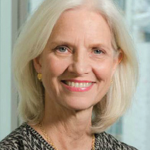The rheumatology unit at Harvard opened at the Massachusetts General Hospital in 1929 under the leadership of Walter Bauer, MD, who served in this role for nearly 30 years. In collaboration with Marian Ropes, Dr. Bauer published a volume in 1953, in which they described the results of 25 years of study of synovial fluid in various diseases; this book played a significant role in the evolution of rheumatology.5
Outstanding, groundbreaking basic research emerged from this unit over several decades. Many American and European physicians trained in this program, and a great many of them became leaders in rheumatology throughout the world. Notable American examples were Hans Waine, MD, who organized the arthritis clinic at the University of California at San Francisco, and his successor, Ephraim Engleman, MD, the director of the Rosalind Russell Medical Research Center for Arthritis, which he founded in 1979, and where he remained active until his recent death at the age of 104.
In 1929, a rheumatology unit at Presbyterian-Columbia Medical Center was established, headed by Ralph H. Boots, MD. He was aided by Martin Dawson, MD, who had worked with Oswald Avery, MD, at the Rockefeller Institute.6 After Dr. Dawson’s early death in 1945, he was succeeded by a former fellow, Charles Ragan, MD.
An extremely important contribution of Dr. Ragan’s unit was the rediscovery of rheumatoid factor in 1948. (Originally described by Dr. Waller in Norway in 1940, that finding was lost in the shuffle during World War II.) The Columbia group’s finding brought this autoantibody, the first associated with a rheumatologic disease, to the attention of the broad rheumatologic community and opened the door to subsequent investigation of autoimmunity.7
A Rheumatic Disease Study Group was established at New York University under Currier McEwan, MD, in 1932. This unit’s unique multidisciplinary organization included members from medicine, pediatrics, microbiology and, ultimately, 12 clinical and basic science departments. In 1956, the National Institute of Arthritis and Metabolic Diseases (NIAMD) awarded the Rheumatic Diseases Study Group one of the first large training grants; more than 200 fellows were trained. Noteworthy among the trainees of this program were Joseph Bunim, MD, who left in 1954 to become the first clinical director of the Arthritis and Rheumatism Branch of the NIAMD in Bethesda, and Morris Ziff, MD, who founded the very strong rheumatology unit at the University of Texas Southwestern Medical School in Dallas in 1958.
The University of Pennsylvania set up a rheumatology clinic in 1937, headed by Bernard Comroe, MD. His comprehensive multi-authored textbook, Arthritis and Allied Conditions, initially published in 1940, quickly became the standard textbook of rheumatology.



